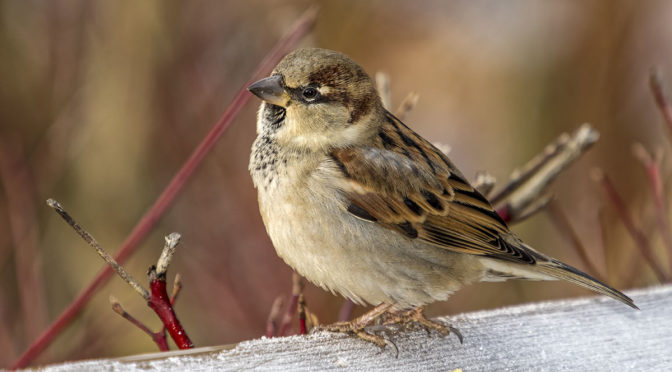This article features a selection of wild bird flash images. These were captured handheld using the Olympus FL-700WR Wireless Radiowave flash during a recent early morning visit to Hendrie Valley.
NOTE: Click on images to enlarge.

The Olympus FL-700WR flash has an IPX1 rating. This makes it a good flash to use for outdoor work in inclement weather.

It worked very well for these morning images, allowing me to capture wild bird flash images at ISO-200.

The flash sync speed of 1/250 was fast enough to capture images of an assortment of small birds, even as they moved about from branch to branch.

The flash did not seem to have any adverse effects on the birds. It did not cause any to take flight or for them to show any anxious behaviour.

Most of the FL-700RW wild bird images that I captured were in the 3 to 4 metres range (~10 to 13 feet).

I attempted a few image captures at further distances and the flash seemed up to the task. The blue jay in the above image was 8.3 metres (~27 feet) away.

At 303 grams (~10.7 oz) not counting batteries, the FL-700RW did not add an excessive amount of weight to my camera set-up.

Cycle times were fast enough to allow me to take multiple images of the same subject birds.

The FL-700RW flash worked well with my M.Zuiko PRO 40-150 f/2.8 zoom with the MC-20 teleconverter.

This was my first attempt at capturing wild bird flash images with the FL-700RW unit. I’ll be experimenting more in the future by doing some flash photography in darker, more heavily wooded areas.

All of the FL-700RW wild bird flash images in this article were captured using TTL mode.
Technical Note:
Photographs were captured hand-held using camera gear as noted in the EXIF data. All images were produced from RAW files using my standard process. All are presented as 100% captures without any cropping.
How you can help keep this site advertising free
My intent is to keep this photography blog advertising free. If you enjoyed this article and/or my website and would like to support my work, you can purchase an eBook, or make a modest $10 donation through PayPal. Both are most appreciated. You can use the Donate button below. Larger donations can be made to tom@tomstirr.com through PayPal.
Word of mouth is the best form of endorsement. If you like our website please let your friends and associates know about our work. Linking to this site or to specific articles is allowed with proper acknowledgement. Reproducing articles, or any of the images contained in them, on another website or in any social media posting is a Copyright infringement.
Article and images are Copyright 2019 Thomas Stirr. All rights reserved. No use, duplication or adaptation of any kind is allowed without written consent. If you see this article reproduced anywhere else it is an unauthorized and illegal use. Posting comments on offending websites and calling out individuals who steal intellectual property is always appreciated!


Wow, on many of these I would not have guessed that flash was use to get the photo. Great first try with flash and birds outside. Will, you also try flash now with the birds you take photos of that are in the walk-in cages?
Hi Joni,
Thanks… I’m glad you enjoyed the images!
I have already used the FL-700RW flash at Bird Kingdom. Here is a link to the article: https://smallsensorphotography.com/fl-700wr-flash
Tom
Hi Tom,
Thanks for sharing this really nice set. It’s really a problem getting details such as the eyes when they’re set on a black or dark band like that of the shrike (?) (please correct me if I’m wrong in the ID) on the second and eighth images. I sometimes have to resort to spot lifting of shadows in post. The light would also be a boon in the more forested, darker areas of the woods. Good thing the speedlight didn’t spook ’em nice birdies.
Oggie
http://www.lagalog.com
Hi Oggie,
I’m certainly not an expert in the identification of bird species. Based on my understanding, image 2 is a black capped chickadee and image 8 is a downy woodpecker.
I will be doing more experimentation with the FL-700WR flash in darker, wooded conditions in the future.
Tom
shrikes wear a mask and have broad flattened beaks
they are about twice as big as our chickadees
around here you find them impaling dinner on hedge and locust trees…barbed wire as well
they seem to hunt open meadows and pastures then retreat to the edges to store their food
Thanks for the additional details Craig!
Tom
of all the things to affect my wildlife shots the flash seems to be the most benign
I try to avoid flash because with my limited skillset I arrive at field guide images. yours don’t have that flatness
when supplementing daylight I’ve never gotten “silver eyes”, however at dawn, dusk and night no mater what I do some shots will have the reflection
any ideas on how to prevent this from occurring ?
thanks
Hi Craig,
I still quite new with using flash for bird photography so I don’t have the experience necessary to answer your question. The images in this article were my first attempt at photographing wild birds with the FL-700WR flash. All of the images in this article were taken with some daylight present, albeit at lower levels. As I do more experimentation with the FL-700WR I will be using in much lower light conditions. That should give me a lot more practical experience. I will certainly watch for ‘silver eyes’ as noted in your comment so I can discover what can be done to help reduce this from happening.
Tom